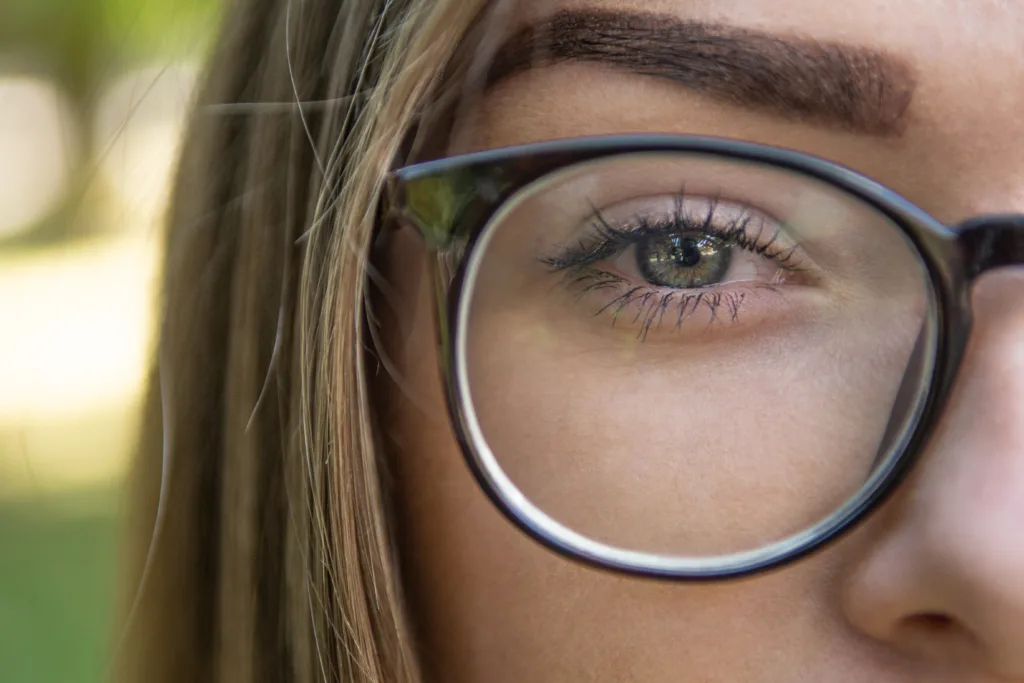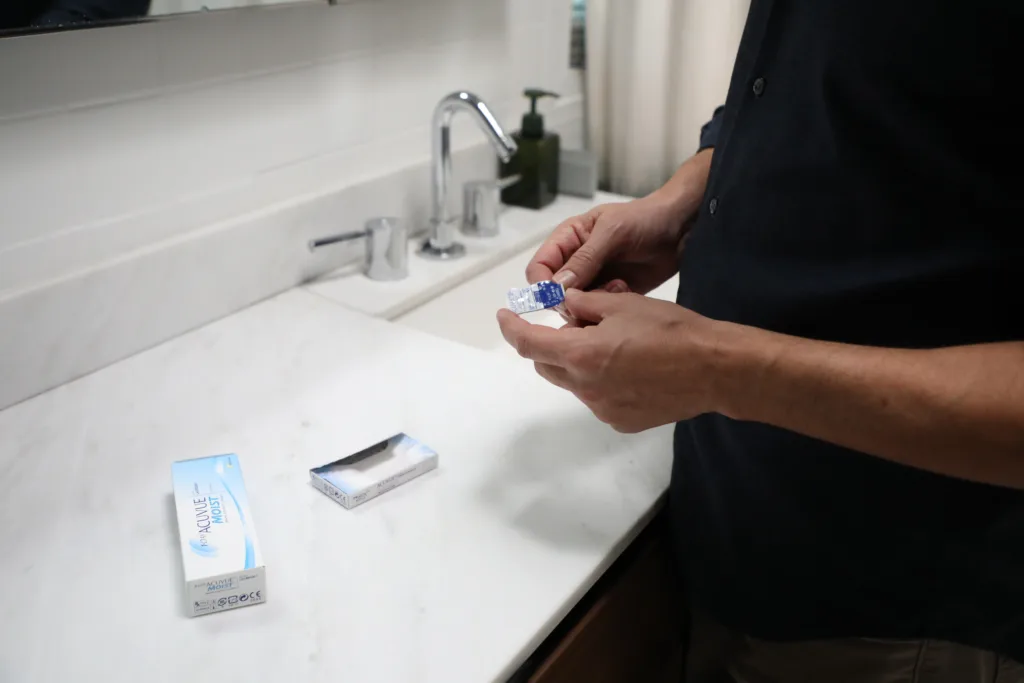For those who wear contact lenses, the cost of maintaining clear vision can add up quickly. From the cost of the lenses themselves to the cleaning solutions and accessories needed to keep them in good condition, it can be a significant expense. So, the question arises – does insurance cover contacts?
The answer is, it depends. Different insurance plans have different coverage options, so it’s essential to check with your provider to see what your plan covers. However, many insurance plans do offer coverage for contact lenses, and it’s worth exploring your options to see if you can save on your eye care costs.
One of the most common types of insurance plans that cover contact lenses is vision insurance. This type of insurance is specifically designed to cover eye care expenses, including the cost of contact lenses. Some vision insurance plans may offer coverage for both eyeglasses and contacts, wile others may only cover one or the other.
If you have a vision insurance plan, you may be able to get coverage for your contact lenses. This can help offset the cost of purchasing lenses and can be especially helpful if you need to replace them frequently. Some vision insurance plans may also cover the cost of eye exams, which can help ensure that your prescription is up-to-date and that you’re getting the correct type of lenses for your needs.
Another type of insurance that may cover contact lenses is health insurance. Some health insurance plans may cover the cost of contact lenses if they’re deemed medically necessary. This may be the case if you have a condition that makes it difficult to wear glasses or if you need contact lenses for post-surgical recovery.
It’s important to note that even if your insurance plan does cover contact lenses, there may be limits on the amount of coverage you receive. For example, your plan may only cover a certain number of boxes of lenses per year, or it may only cover a specific type of lens. Be sure to check with your provider to understand the details of your coverage.
If you’re a contact lens wearer, it’s worth exploring your options for insurance coverage. Vision insurance and health insurance may offer coverage for contact lenses, which can help offset the cost of maintaining clear vision. However, it’s essential to understand the details of your coverage to ensure that you’re getting the most out of your insurance plan.
Cost of Contacts With Insurance
The cost of contact lenses with insurance coverage can vary depending on the type of plan you have. Some insurance plans offer full coverage for contact lenses, while ohers may only cover a portion of the cost. Additionally, the cost of the lenses themselves can vary depending on the brand and type of contact lenses you need. On average, people with insurance coverage for contact lenses can expect to pay between $150 and $1,500 per year, with most people falling in the range of $200 to $500 for a year’s supply. It’s important to check with your insurance provider to see what is covered under your plan and what out-of-pocket expenses you may incur.

Cost of Contacts Without Insurance
If you’re looking to purchase contact lenses wihout insurance, you can expect to pay anywhere from $200 to $1,000 per year, or $15 to $85 per month, depending on the type of lenses you need. This range accounts for different types of lenses, such as daily disposable, bi-weekly, and monthly lenses, as well as lenses for different types of vision correction, such as astigmatism or presbyopia. The cost can also vary depending on the brand and where you purchase them. It’s important to note that some retailers offer discounts for bulk purchases or subscription services. it’s wise to do some research and compare prices before settling on a particular brand or retailer.
The Cost of Prescription Contacts
Prescription contacts can vary in cost depending on various factors such as the brand, type, and quantity. On average, an annual supply of contacts for somene who is nearsighted can cost between $200 to $300. This price will include multiple pairs of contacts that can last for a year. However, if you need to replace your contacts frequently, you should plan to purchase approximately six to ten boxes of contacts throughout the year. The cost of each box can range between $20 to $30, depending on the brand and type of contacts you require. It is important to note that the cost of prescription contacts can vary based on the specific prescription and the retailer you purchase them from.
Can Insurance Cover Contacts and Glasses?
Whether you can get contacts and glasses with insurance depends on the specifics of your insurance plan. Generally, most insurance plans will cover either contacts or eyeglasses, but not both in the same year. Some plans may offer a copay for an eye exam and a separate allowance for either contacts or glasses. For example, Humana Vision offers a $25 copay for single vision lenses and a $150 allowance toward frames once every 12 months through participating providers. It’s important to review your insurance plan and check with your provider to understand what is covered and any limitations or restrictions.
Comparing the Cost of Glasses and Contacts
When it comes to the cost of vision correction, there is no definitive answer as to whether glasses or contacts are cheaper. Generally speaking, glasses tend to be less expensive upfront, but they may need to be replaced more frequently than contacts. On the other hand, contact lenses can be more costly initially, but they may last longer and require less maintenance. Ultimately, the cost of glasses versus contacts will depend on several factors, such as the type of lenses prescribed, the frequency of replacement, and the individual’s unique needs and preferences. It’s important to discuss all options with an eye doctor and consider the long-term costs and benefits bfore making a decision.

Cost of a 90-Day Supply of Contacts
A 90-day supply of contact lenses typically comes in a box of 90 lenses and can cost between $60 to $150 per box depending on the brand, type, and retailer. The price can also vary depending on whether you need prescription lenses or non-prescription lenses. It’s important to note that the cost of contacts can also depend on any discounts or promotions offered by the retailer or manufacturer. It’s always a good idea to shop around and compare prices to find the best deal for your specific needs. Additionally, it’s important to consult with your eye doctor before purchasing contact lenses to ensure that you are gettig the correct prescription and type of lenses for your eyes.
Comparing the Cost of Contacts from a Doctor and Online
It is generally cheaper to get contacts from an eye doctor than to purchase them online. While online retailers may offer lower prices, they often do not include additional fees such as shipping or handling charges. Additionally, buying contacts from your eye doctor can provide significant savings due to the rebates and discounts they offer. Eye doctors are often able to offer btter rates on contacts because they have access to a wider range of brand options and are able to negotiate better deals with manufacturers. Furthermore, purchasing contacts through your eye doctor allows for personalized fitting and adjustments, which can help ensure that you are getting the best possible fit for your eyes. while online retailers may seem like a convenient option for purchasing contacts, the cost savings and benefits of ordering through your eye doctor make it the more cost-effective choice.
Cost of Two-Week Contacts
The cost of 2 week contacts can vary depending on several factors such as your eye doctor, your access to vision insurance, and your specific prescription. Generally, the cost of ACUVUE® Brand Contacts that need to be replaced every two weeks can range from $175 to $1,055 per year. However, it is important to note that this is just an estimate and the actual cost may vary based on the aforementioned factors. Additionally, many eye doctors offer a free trial pair of contacts, whih can help you determine if a specific brand or type of contacts is right for you before committing to purchasing a full supply. Furthermore, you may be able to save money on your contacts by taking advantage of MyACUVUE® Rewards, which offers up to $50 in savings. Ultimately, the cost of your 2 week contacts will depend on your unique circumstances and should be discussed with your eye doctor.
Are Monthly Contact Lenses More Cost-Effective Than Daily Contact Lenses?
When it comes to the cost of contact lenses, it’s important to consider the frequency of use and the maintenance required for each type of lens. Monthly contacts typically cost less per lens than daily contacts, but they do require additional expenses such as cleaning solutions and storage cases. On the oher hand, daily contacts are more expensive per lens, but eliminate the need for cleaning and storage expenses.
It’s also worth noting that the actual cost of contact lenses can vary based on factors such as brand, prescription strength, and where you purchase them from. Additionally, some insurance plans may cover the cost of contact lenses or offer discounts on certain types. Ultimately, the decision between monthly and daily contacts should be based on individual preferences and needs, including budget, convenience, and comfort.

Comparing Vision Improvement With Contacts and Glasses
The answer to this question may vary from person to person, as it largely depends on individual preferences and needs. However, in general, both glasses and contacts can provide excellent vision correction when used correctly.
Glasses are typically easier to use and require less maintenance compared to contacts. They can also provide a wider field of vision, and some people find them more comfortable to wear. Glasses also offer protection from dust, wind, and other environmental factors that can irritate the eyes.
On the other hand, contacts can offer more natural vision, as they sit directly on the eye and move with it. They also don’t interfere with your peripheral vision, which can be an advantage for sports and other activities. Contacts can be especially useful for those with higher prescriptions or astigmatism, as they can provide more precise vision correction.
Ultimately, the choice between glasses and contacts depends on your personal preferences and lifestyle. Some people may prefer the convenience of glasses, whle others may find contacts more comfortable and practical. In some cases, a combination of both glasses and contacts may provide the best vision and comfort. It’s always best to consult with an eye care professional to determine the best option for your individual needs.
Understanding Legally Blind Prescription
Legally blind prescription refers to the level of visual acuity that is considered legally blind by the United States government. If your prescription is -2.5 or lower, this means that you are legally blind. Visual acuity of -2.5 is equivalent to 20/200 vision, which means that you can see at 20 feet what someone with normal vision can see at 200 feet. This level of visual impairment can have a significant impact on daily activities such as reading, driving, and recognizing faces. It is important to note that visual acuity is not the only factor that determines legal blindness, as visual field and other vision impairments may also be takn into consideration. If you have a legally blind prescription, it is recommended that you seek the advice of an eye care professional to discuss treatment options and visual aids that can improve your quality of life.
Wearing Contacts Every Day: Is It Safe?
In general, you can wear contact lenses evry day. In fact, daily use of contact lenses is quite common, as it provides a convenient and comfortable alternative to eyeglasses. However, there are a few factors that can prevent you from wearing your contact lenses every day. For example, if you experience eye redness, dryness, or irritation, it is wise to take a break from wearing your contacts and consult with your eye doctor. Additionally, some types of contact lenses, such as extended wear or disposable lenses, have specific usage guidelines that you should follow to ensure the health of your eyes. if you take proper care of your contact lenses and follow the recommended usage guidelines, you should be able to wear them every day without any issues.
The High Cost of Contact Lenses
There are several factors that contribute to the cost of contact lenses. First and foremost, the material of the lens plays a significant role in determining the cost. In recent years, newer generation materials that alow for greater oxygen permeability have been developed, which are more expensive to produce. Additionally, the design and manufacturing process of the lenses can also affect the cost, as more complex designs may require more time and resources to create. Furthermore, the packaging and distribution of contact lenses also adds to the cost, as they must be carefully packaged and shipped to ensure they arrive in good condition. the cost of contact lenses may also include fees for professional services, such as fitting and follow-up appointments with an optometrist. All of these factors contribute to the overall cost of contact lenses, but it’s important to keep in mind that investing in high-quality contact lenses can ultimately lead to better eye health and comfort.

Source: aarp.org
Number of Pairs of Glasses Covered by Vision Expense Insurance Plan in 12 Months
A vision expense insurance plan typically covers one pair of eyeglasses within a 12 month period. However, it is important to note that this coverage may vary depending on the specific insurance plan and provider. Some plans may offer additional coverage for a second pair of glasses or contact lenses, wile others may only cover the cost of lenses and not frames. It is always advisable to carefully review the details of your insurance plan to fully understand the coverage and any limitations or exclusions. Additionally, it is important to note that most vision expense insurance plans do not cover the cost of safety glasses, which may require separate coverage through a workplace or personal insurance policy.
Insurance Coverage for Eyeglasses
Medicaid typically covers the cost of one pair of replacement glasses per year. However, if you are 21 years old or younger, you are allowed two pairs of replacement glasses per year. It is important to note that glasses may be replaced if they are broken, lost, or stolen. It is always a good idea to check with your insurance provider to confirm your specific coverage details.
Conclusion
The cost of contact lenses can vary significantly depending on the brand, type, and insurance coverage. While disposable contact lenses can cost between $200 and $1,000 per year, the average annual supply of contacts for nearsighted individuals can range from $200 to $300. It is essential to note that insurance plans vary in their coverage of contacts, and it is crucial to check your plan design to determine how often you can get contacts or glasses. Generally, plans do not cover both eyeglasses and contacts purchased in the same year. However, some insurance providers offer copays and allowances towards frames and lenses, which can significantly reduce the cost of contacts. It is always advisable to consult with your insurance provider and optometrist to ensure you are getting the best possibe coverage for your contact lenses.
